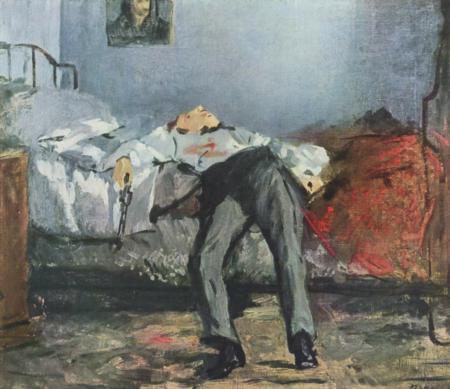The Stigma of Suicide
Recently I read, in succession, three books on suicide, each written by a mother who lost one of her children to suicide. All three books are powerful, mature, not given to false sentiment, and worth reading: Lois Severson, Healing the Wound from my Daughter's Suicide, Grief Translated into Words, lost her daughter, Patty, to suicide; Gloria Hutchinson, Damage Done, Suicide of an Only Son, lost her son, David, to suicide; and Marjorie Antus, My Daughter, Her Suicide, and God, A Memoir of Hope, lost her daughter, Mary, to suicide. Patty and David were in their mid-twenties, Mary was still a teen.
You cannot read these biographies and not have your heart ache for these three young people who died in this unfortunate manner. What these books describe in each case is a person who is very loveable, oversensitive, has a history of emotional struggles, and is in all likelihood suffering from a chemical imbalance. Hearing their stories should leave you more convinced than ever that no God worth worshipping could ever condemn any of these persons to exclusion from the family of life simply because of the manner of their deaths. Gabriel Marcel had an axiom which said: To love someone is to say of that person, you at least will not die. That's solid Christian doctrine.
As Christians we believe that, as a community of believers, we make up the Body of Christ along with all of those who have died in faith before us. Part of that belief is that Christ has given us the power to bind and loose which, among other things, means that our love for someone can hold that person inside our family, inside the community of grace, and inside of heaven itself. In all three of these books, these mothers make it clear that this is exactly what they are doing. Their family, their circle of grace, their love, and their heaven includes their lost child. My heaven too includes these three young people, as should any true understanding of God, of grace, of love, and of the family of life.
That's a deep consolation, but it doesn't take away the pain. For a parent, the loss of a child to any kind of death leaves a wound that, this side of eternity, will find no healing. The death of one's child goes against nature, parents aren't supposed to bury their children. The death of any child is hard, but if that death comes by suicide, that pain is compounded. There's the frustration and anger that, unlike a death from a physical disease, this is unwarranted, unnecessary, and an act of betrayal in some way. And there's the endless second-guessing: How responsible am I for this? How should have I been more alert? Where was I negligent? Why wasn't I around at the crucial moment? Guilt and anger comingle with the grief.
But that isn't all. Beyond all of this, which is itself more than sufficient to break a person, lies the stigma attached to suicide. In the end, despite a better understanding of suicide and a more enlightened attitude towards it, there is still a social, moral, and religious stigma attached to it, equally true in both secular and religious circles. In the not too-distant past, churches used to refuse to bury someone who died by suicide on blessed ground. The churches have changed their attitudes and their practice on this, but, truth be told, many people still struggle in their gut to accord a blessed, peaceful farewell to someone who has died by suicide. The stigma still remains. Someone who dies in this manner is still seen as somehow accursed, as dying outside the family of life and the circle of grace. There is, for most people, nothing consoling in their deaths.
I have suggested elsewhere in my writings that the majority of suicides should be understood as death by a mortal illness: a deadly chemical imbalance, an emotional stroke, an emotional cancer, or an oversensitivity that strips someone of the resiliency needed to live. Here, however, I want address more specifically the issue of the stigma attached to suicide.
There's still a stigma attached to suicide, that's clear. With that in mind, it can be helpful to reflect upon the manner in which Jesus died. His death was clearly not a suicide, but it was similarly stigmatized. Crucifixion carried a stigma from every point of view: religious, moral, and social. A person dying in this way was understood to be dying outside the mercy of God and outside the blessing and acceptance of the community. The families of those crucified carried a certain shame and those who died by crucifixion were also buried apart, in grounds that then took on their own stigma. And it was understood that they were outside the mercy of God and of the community.
Jesus death was clearly not a suicide, but it evoked a similar perception. The same stigma as we attach to suicide was also attached to the manner in which he died.
- Oblate Father Ron Rolheiser, theologian, teacher, and award-winning author, is President of the Oblate School of Theology in San Antonio, TX. He can be contacted through his website www.ronrolheiser.com.
Now on Facebook www.facebook.com/ronrolheiser



















